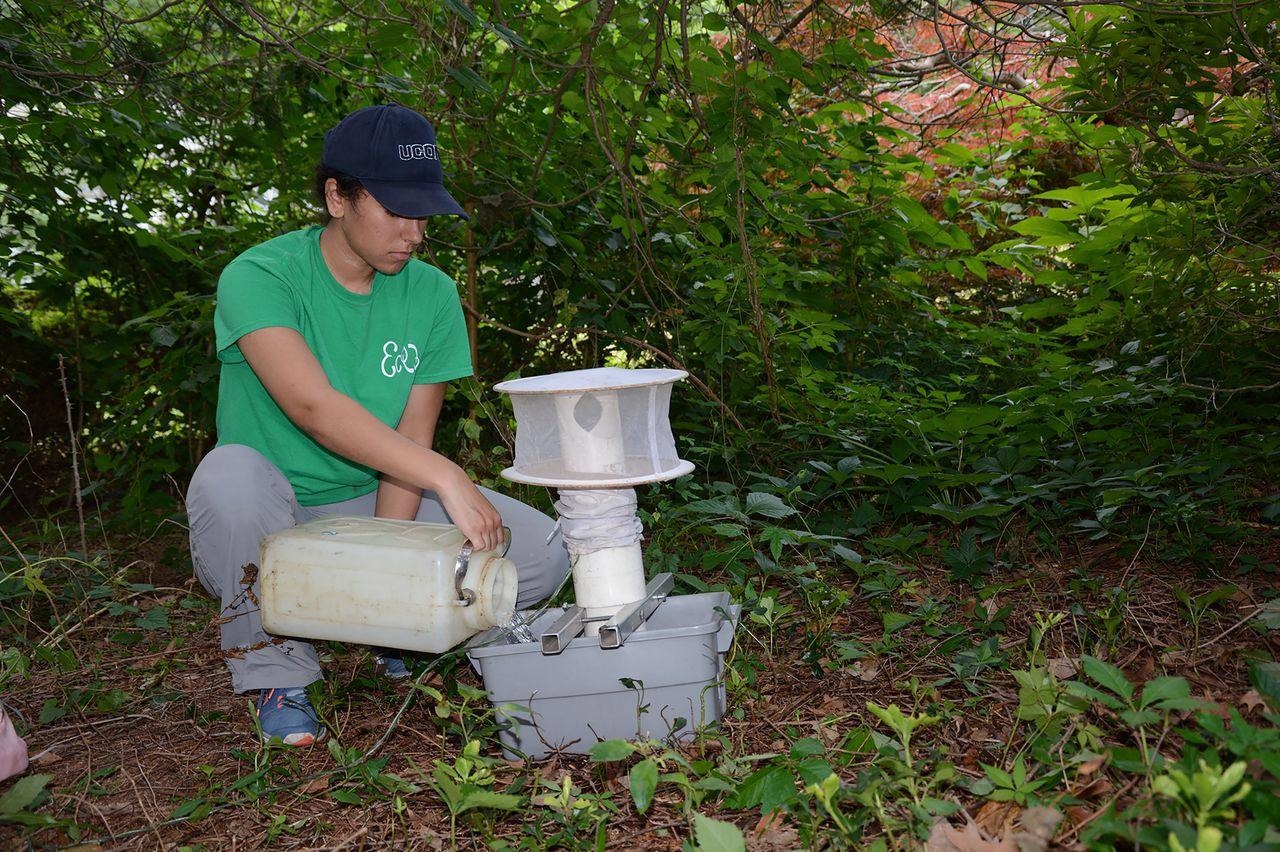Climate change is sickening, literally!

Climate change has a major role in the shifting of range and seasonality of several diseases, the most prominent of which includes Lyme disease. In fact, Lyme was initially a summer disease; however, since 1990, warmer climates have shortened winters and, as a result, extended the duration of Lyme disease in New England.
High altitudes and latitudes were previously less susceptible to disease risk; however, wetter and warmer conditions in these places have started alluring ticks and mosquitoes. The 2021 Lancet Countdown report highlighted a 39% increase in malaria transmission in certain highland areas of the world since 1950. Furthermore, an increase in Vibrio bacterial infections has been observed in several high-altitude regions between 2011 to 2021.

Study: Climate change hastens disease spread across the globe. Image Credit: Kwangmoozaa / Shutterstock.com
The risk of disease depends upon public health measures, emergency preparedness, as well as the availability of response plans in the event of a localized outbreak. However, as the environment becomes more inviting for disease transmission, the management of risks becomes more difficult.
A new feature by science writer Amy McDermott published in Proceedings of the National Academy of Sciences of the United States of America highlights the change in disease spread with climate change across the globe.
Mountains and diseases
The geographic boundaries of diseases are sensitive to climate changes. Tick vectors, mosquito vectors, and vectors of most other diseases are cold-blooded arthropods whose internal temperatures are able to track environmental changes quickly. Several physiological traits, such as the duration for which the vectors are alive, their infectiousness, and biting, are temperature sensitive.
In 2014, Pascual and his co-authors determined that malaria outbreaks increased in the alpine mountain communities as a result of warming at high altitudes. In 2010, medical entomologist Philip Armstrong identified the movement of southerly mosquito species farther north as compared to their historical ranges.
Furthermore, researchers have suggested that the fungal disease Valley fever, which was previously endemic to the Southwest United States and dry regions of Central and South America, will likely climb north this century. This fungus is capable of infecting human lungs, subsequently leading to flu-like symptoms, joint pain, and meningitis.
A high incidence of Valley fever cases was observed in areas with mean temperatures over 51.3° F (10.7° C) and less than 600 millimeters (mm) of precipitation per year. Gorris, a postdoctoral Earth system scientist, stated that under severe climate warning scenarios, the fungus could reach as far north as the U.S.–Canadian border towards the end of this century.
Concerns regarding the change in the disease course with climate
Jeremy Cohen, a postdoctoral wildlife ecologist at Yale University, has used several statistical models to predict temperature changes, as well as host and parasite traits, on the prevalence of diseases. One model suggests that in cool areas, a dramatic increase in disease risk can be observed due to climate change.
Comparatively, in temperate areas, only a muted risk is observed, while in tropical areas, the risk of disease might decrease with climate change. This can be attributed to the fact that the warming of already hot regions could exceed the survival temperature maxima of parasites. Mosquito-borne diseases also have been shown to decline in the hottest parts of the tropics, as mosquitos have a specific thermal temperature range that allows for their survival and ability to transmit diseases.
Two-thirds of human diseases are reported to come from wildlife, including those due to infection with the severe acute respiratory syndrome coronavirus 2 (SARS-CoV-2), Ebola and human immunodeficiency virus (HIV), in addition to Lyme disease. Thus, it is important to understand the factors that promote disease outbreaks. However, certain studies do not agree with the fact that change in disease outbreaks is a result of climate change.

Field crews at the Connecticut Agricultural Experiment Station track the diversity and abundance of disease-carrying mosquitoes using traps baited with a yeast–hay infusion mixed with water. They also use traps that attract the mosquitoes using dry ice and light. Image credit: Connecticut Agricultural Experiment Station.
High and low-tech solutions to manage disease outbreaks
Technological solutions have been found to mitigate disease spread in certain cases. Recently, the introduction of genetically modified Aedes aegypti mosquitoes in the United States do not bite and carry a gene that is lethal to the mosquito offspring. This method is quite beneficial, as it can deliver control measures to mosquito breeding grounds that might be overlooked in conventional spraying.
However, researchers must be aware of where mosquito populations are located and how they are connected to improve the efficacy of this method. Furthermore, modified males need to be robust enough to compete with wild-type males for breeding.
Public health preparation appears to be the best solution, as stated by epidemiologist Jan Semenza. The affected patient must be immediately isolated and treated to prevent the spread of a disease, as the elimination of a mosquito or tick population is otherwise difficult to achieve.
- McDermott, A. (2022). Climate change hastens disease spread across the globe. Proceedings of the National Academy of Sciences of the United States of America. doi:10.1073/pnas.2200481119.
Posted in: Medical Science News | Medical Research News | Disease/Infection News
Tags: Anemia, Climate Change, Cold, Coronavirus, Efficacy, Fever, Flu, Gene, HIV, Immunodeficiency, Joint Pain, Lungs, Lyme Disease, Malaria, Meningitis, Mosquito, Pain, Public Health, Respiratory, SARS, SARS-CoV-2, Severe Acute Respiratory, Severe Acute Respiratory Syndrome, Syndrome, Virus

Written by
Suchandrima Bhowmik
Suchandrima has a Bachelor of Science (B.Sc.) degree in Microbiology and a Master of Science (M.Sc.) degree in Microbiology from the University of Calcutta, India. The study of health and diseases was always very important to her. In addition to Microbiology, she also gained extensive knowledge in Biochemistry, Immunology, Medical Microbiology, Metabolism, and Biotechnology as part of her master's degree.
Source: Read Full Article